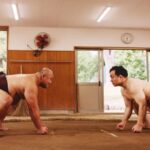This advice is for all levels of triathletes. They will keep you from looking like a piranha attacking you, even if you’re a complete beginner. They’ll also show you how to trim the time without shaving your legs if you are a veteran.
You can choose any stroke for the swim if you are training for your first triathlon. However, the emphasis is on freestyle. This not only provides an excellent cardio workout but also works the most muscles, building core strength, and calories. This seven-step strategy will leave no one behind.
Swim tall
Laughlin says that water is 1,000 times more dense than air. “So, the most important thing is to get your body through the smallest possible hole in the water.” Think of a central axis that runs from your top to the other end of the pool. With each stroke, rotate your body along the axis. Keep your leading arm extended as far as possible. As you propel through the water, keep your muscles tight in your lower back. This will ensure that both your arms as well as your legs are able to propel you. Instructional training videos and online courses for Coaching Swimming from top athletes and coaches around the world.
Drop an anchor
Swimming with your hands is the same as jumping with your feet. Instead, grab the water with your entire hand and forearm, and then dig in as if you were digging sand with an shovel. Your hands should be flat, firm and broad. Your arm should not be pushed through the water. Instead, you should anchor it and pull your body above it.
Heavy rotation
Your leading arm should be in the water and your lower side should be pointing towards the bottom. Your other side, the high side, should be raised with your arm just finishing its stroke ready to return to water. Laughlin states that power is activated when you drive on the high side. “Increase your power by moving your high-side arm along the central axis to the leading position, and then rotating your hips. Your low-side arm, which is your pulling arm underwater, works with your rotating body to provide acceleration.
Keep your head down
Freestylers used their heads up. This caused the rest of their body to fall, making it a high-drag plough. Phelps says, “I look straight down at the bottom” of the pool. This reduces drag and keeps your torso up, which reduces strain on your neck.
Your glide path
Less strokes are better in the pool. A high distance per stroke (DPS) should be your goal. Phelps, an elite swimmer, can swim 25m in seven strokes (each stroke counts as one stroke). Keep your momentum high and keep your speed under 20. Keep your anchor in place and glide forward, one arm back and one forward. Laughlin says that you will travel farther and faster if your legs are straight near your axis. “When your pace slows, you can start the next stroke.”
Drag your feet
Phelps says, “If you are a good kicker you will be a great swimmer.” Turning your feet into fins is the key. Again, leverage rules. Your legs should be straight and scissor you through the water. While your feet must remain flexible, your legs should be taut. They will snap at each kick’s downstroke, increasing oomph and helping to twist your torso around the central axis. To increase flexibility, you can buy fins, such as Speedo Swim Fins, P19.99.
Don’t lose your breath
It is easy to drown by gasping for air whenever your head touches the surface. Make every breath count. You should exhale all the air out of your lungs, not just the 90 percent, before you take a short, full, slow breath on the high side. Beginners need to inhale after every stroke. However, as endurance increases, you can try alternate sides, i.e. after three strokes. This will reduce strain on your neck, shoulders, and back that can result from breathing on one side.






